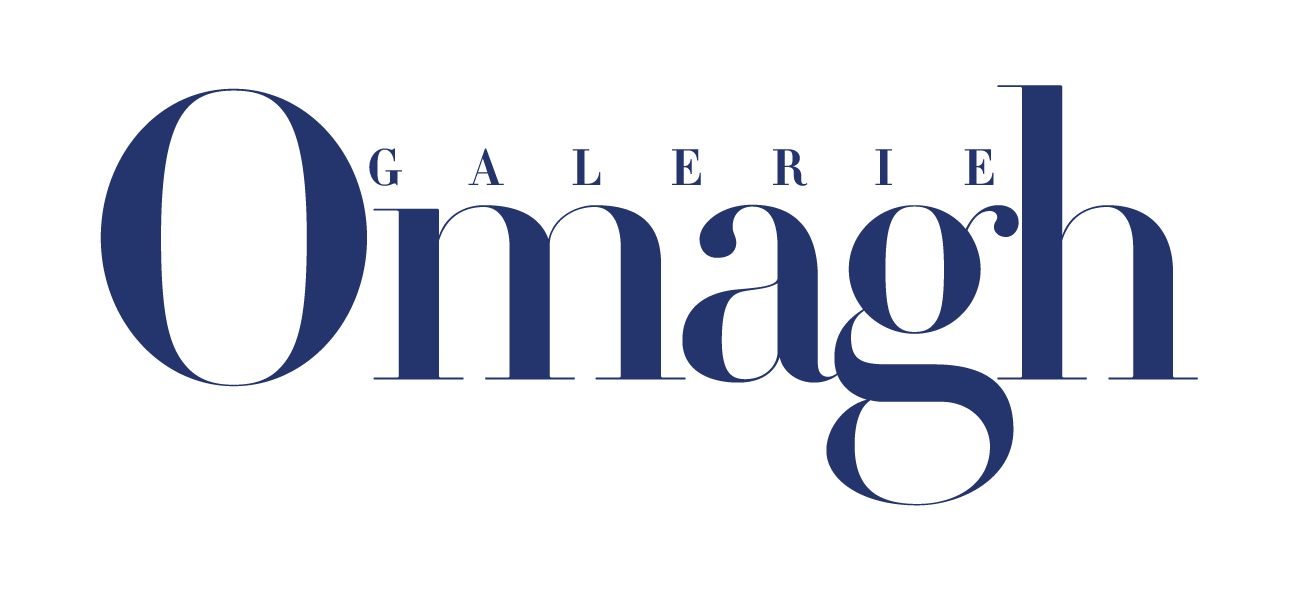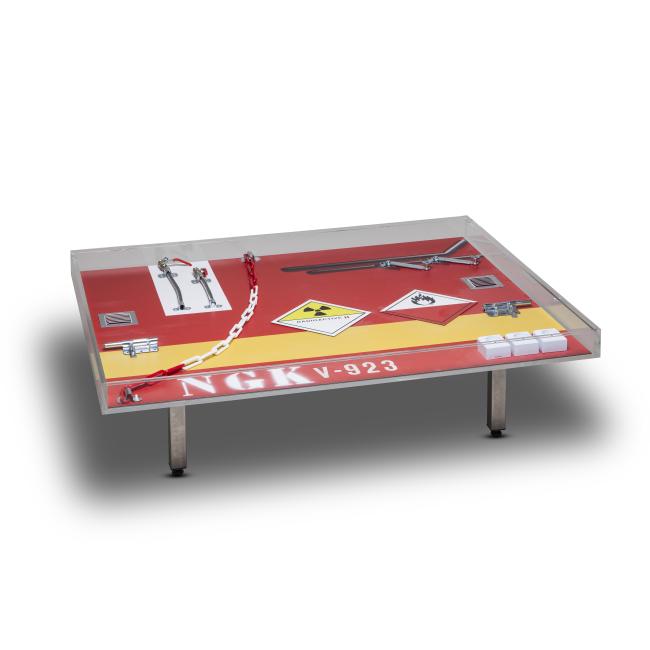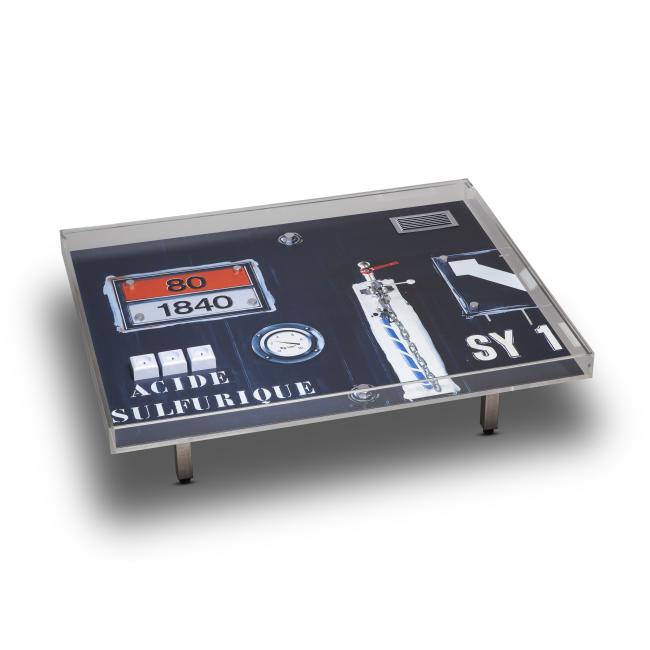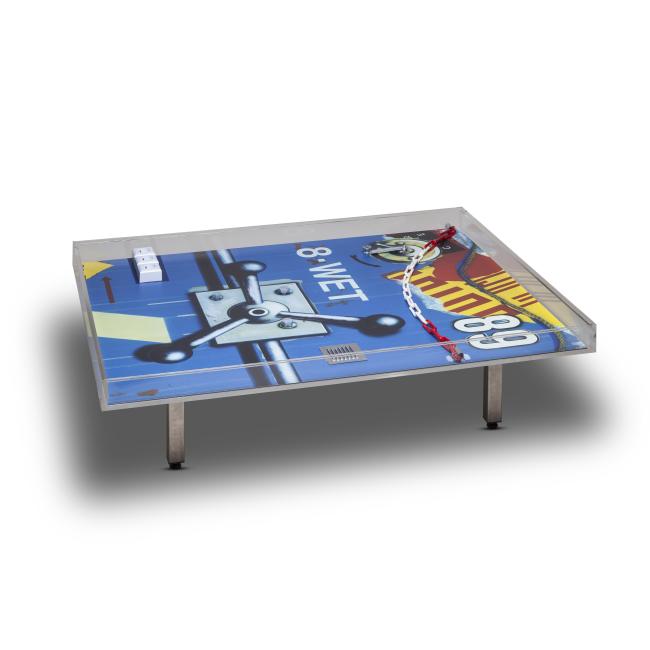Peter Klasen
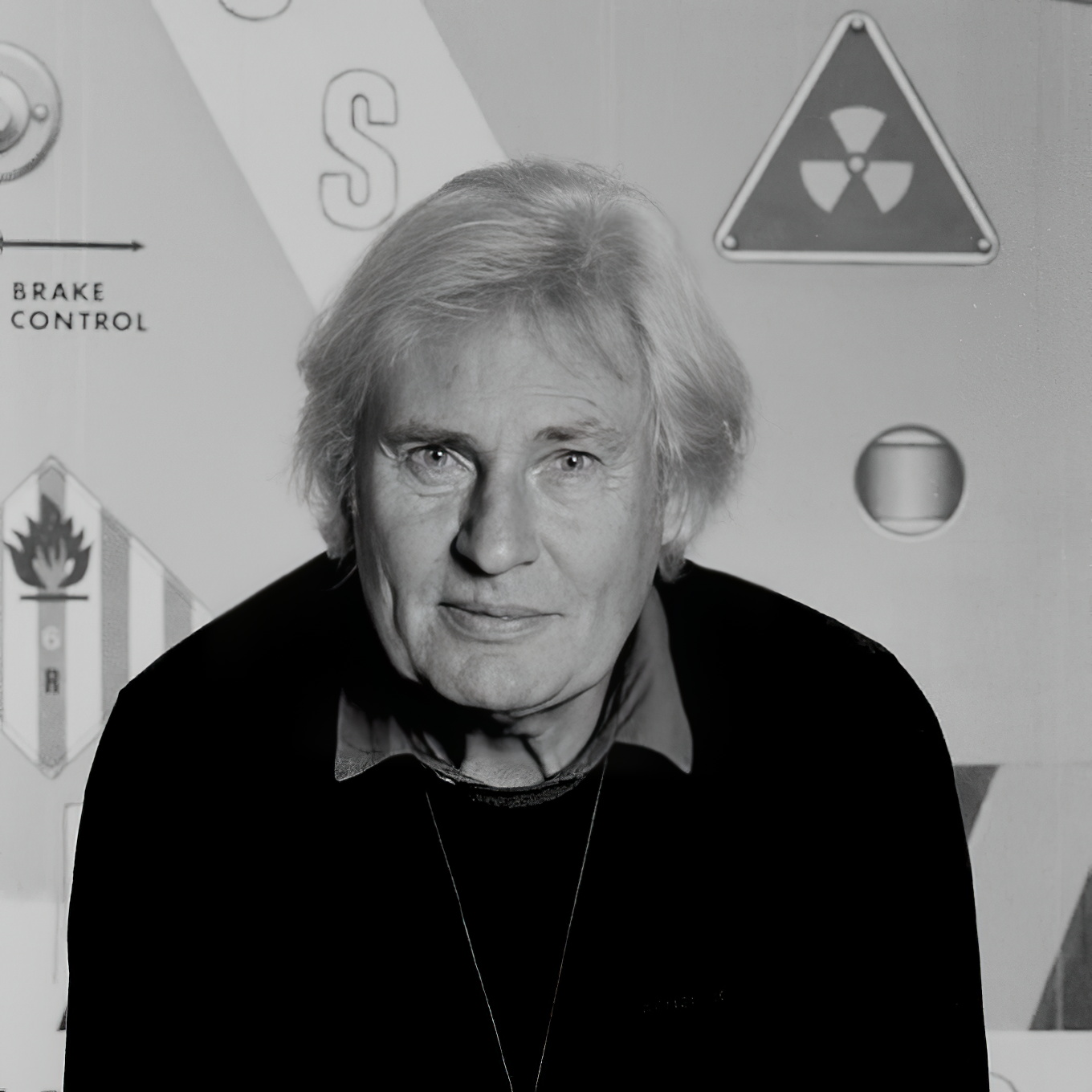
Peter Klasen was born in 1935 in Lübeck, Germany. Deeply marked by the trauma of war: he witnessed the bombing of his hometown and lost his father, declared missing in 1943, he developed an early sensitivity to the tensions of the real world.
He studied at the Berlin Academy of Fine Arts, then considered the most progressive art school in Germany, and moved to Paris in 1959 with a scholarship. In 1960, he began his first “tableaux-rencontres,” confronting cut-out imagery with airbrushed painting.
From the 1960s to the early 1970s, Klasen built a distinctive visual vocabulary: consumer objects (telephones, records, bathroom fixtures), medical instruments (thermometers, syringes), and fragments of the female body lifted from magazines and advertisements. His compositions explore binary oppositions: seduction and control, body and machine, intimacy and industrial coldness.
A pivotal stay in New York in 1981 fueled his fascination with urban surfaces: worn textures, graffiti, and cinematic imagery became integral to his work.
Klasen has since developed a powerful and instantly recognizable pictorial language at the crossroads of Pop Art, industrial aesthetics, and critical realism.
His work is held in major museum collections, including the Centre Pompidou in Paris, the Museum of Modern Art in New York, and the Museum of Contemporary Art in Seoul.
